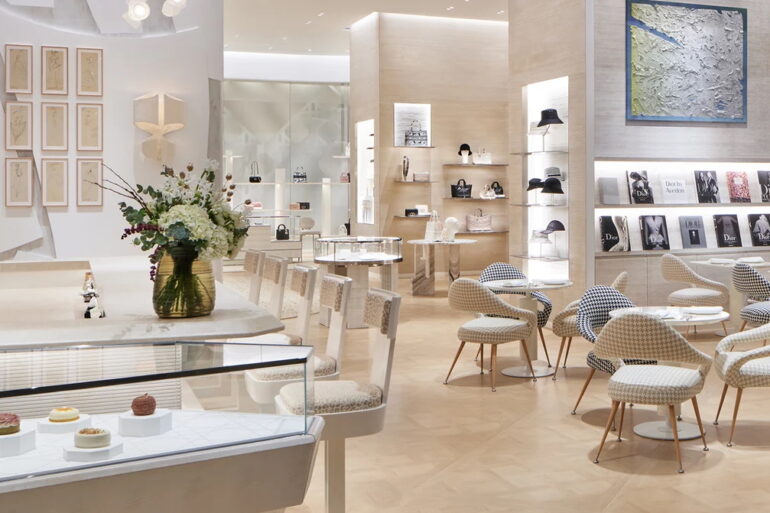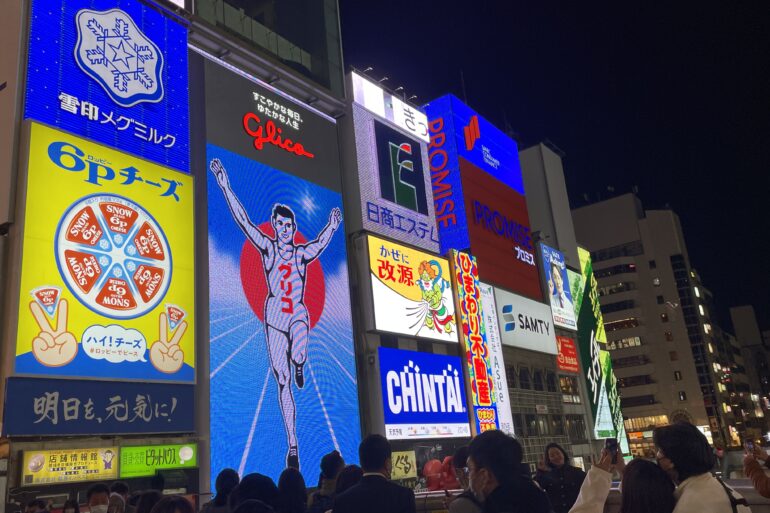At a time when national morale is low, the story of the Filipino continues to shine brightly on the global stage in Osaka, Japan.
The World Expo is one of those events that brings pretty much every single country together for one reason — to showcase the best that they have to offer each other and the rest of humankind. Held every five years, the gathering, which this year counts 165 participants, celebrate ideas to promote greater understanding, and innovation for a better world. For the World Expo Osaka 2025, the central theme is Designing Future Society For Our Lives, harnessing ideas as society powers ahead to meet its sustainable development goals.
As one of the rising economies in Asia, the Philippines has kept an active participation in the various expos over the years. They wear their Filipino heart proudly on their sleeve, telling the story of a culture that stands as strong as all the strife, tradition, and history intertwined into the very fabric of their being. That very narrative is told in Woven, the central theme to this year’s Philippine pavilion.
On our visit to the World Expo, we chatted with pavilion manager Marge San Jose to find out why this structure holds space, literally and figuratively, for the best of what it means to be Filipino. “We want to showcase that we are a nation that is deeply connected to our culture, to our nature, and to our community,” she points out. “That we are committed to sustainability and to global dialogue, while finding that sweet spot between tradition and technology, where we are able to innovate.” An animé-inspired film, in honor of Japan, plays on the façade’s giant screen, to invite visitors in to be woven into the Filipino story.
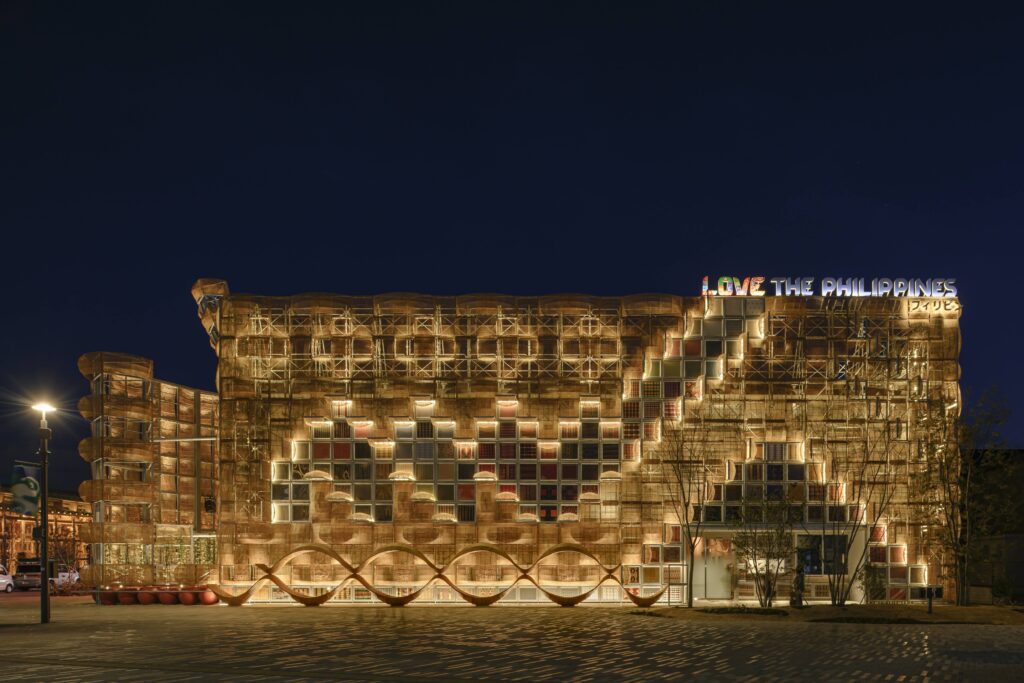
A structure woven in resilience and hope
One of the first things you will notice as you approach the Philippine pavilion, which is most accessible through the East gate of the Expo, and stands in between Malaysia and the United States, are the graceful waves and curves that run across the walls of the structure.
Designed by architect Carlo Calma in collaboration with an international team of designers, it is made of primarily of rattan, which is considered to be one of the most sustainable materials available as it is easy to grow, and steel. The windows are adorned with weaves sourced from weavers all over the Philippines —again, a distinct representation of the country’s rich heritage. For Filipinos, the use of rattan ignites memories of childhood and home.
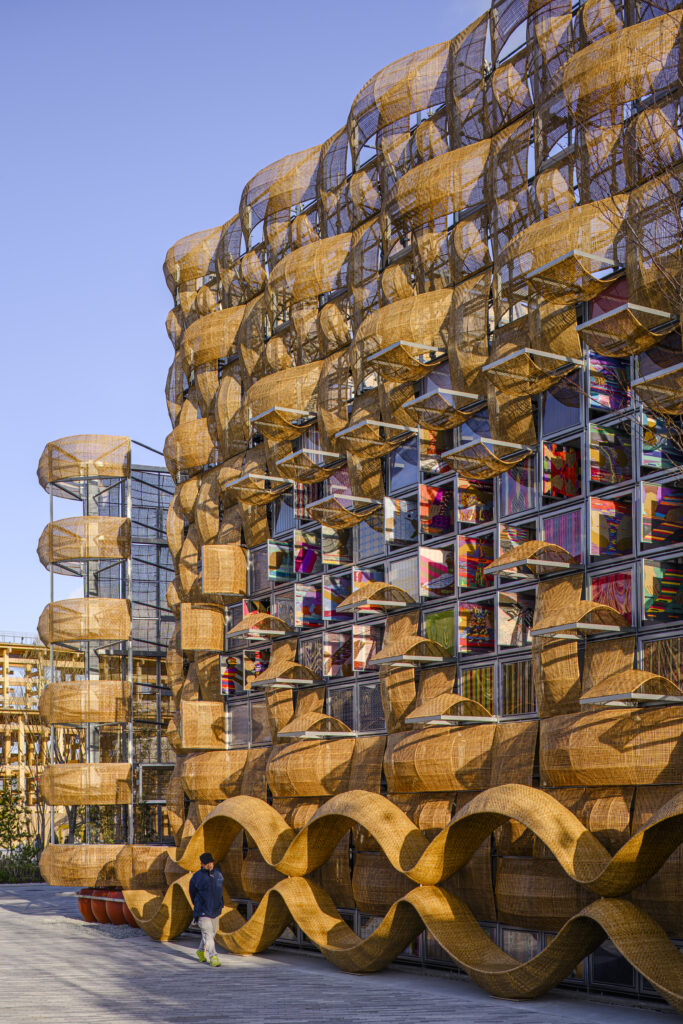

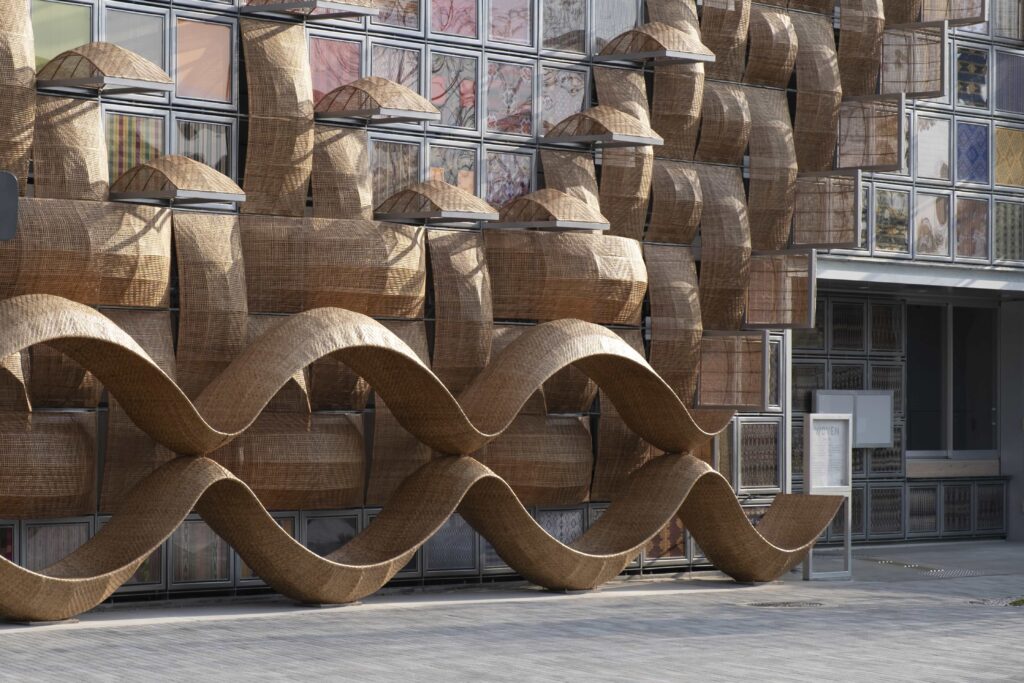

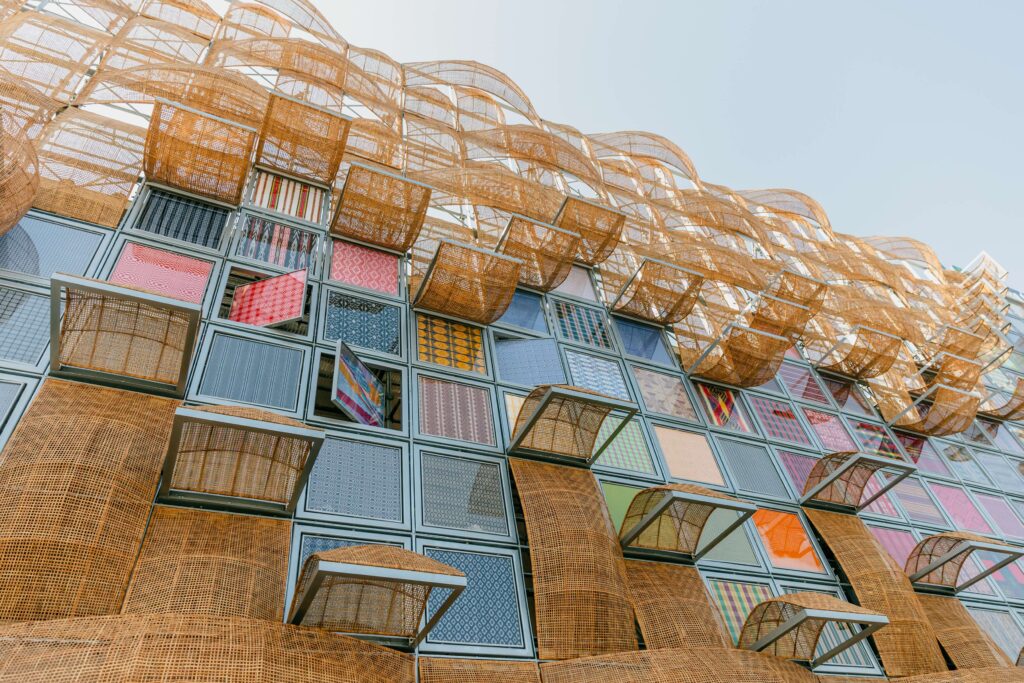
Meeting the Philippines in different spaces
One of the most interesting things you’ll find at the pavilion are the 18 museum-worthy tapestries, woven by artisans and weavers from Cebu, which has been recognized as a UNESCO Creative City For Design. Each tapestry was imagined to represent the 18 different regions of the Philippines, and the culture that makes them unique against the background of the Philippine diaspora.
San Jose points out, “The entire process was a collaboration of various sectors and communities. There was a lot of research that went into it.” And all the little details—from the materials used to the imagery —attest to that. Imagine Capiz shells for the Visayas, “pûso” rice holders for Negros, beaded mangoes for Guimaras, and Maranao weaves for the regions down South. Some of the displays are enhanced with video projections and music.

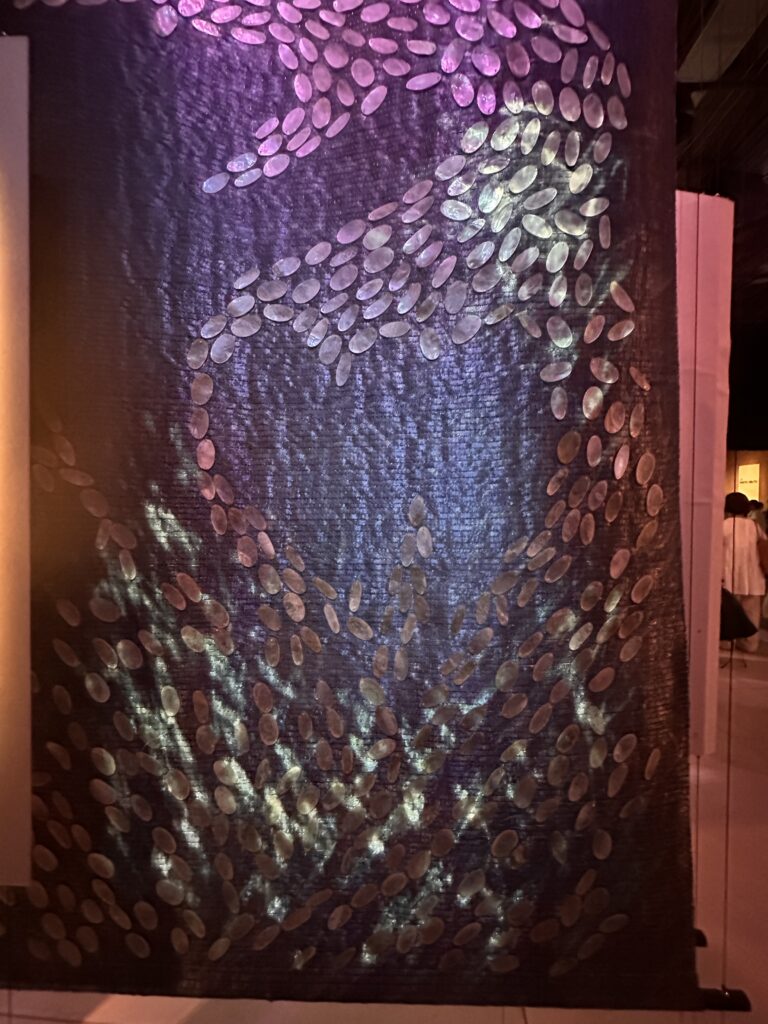
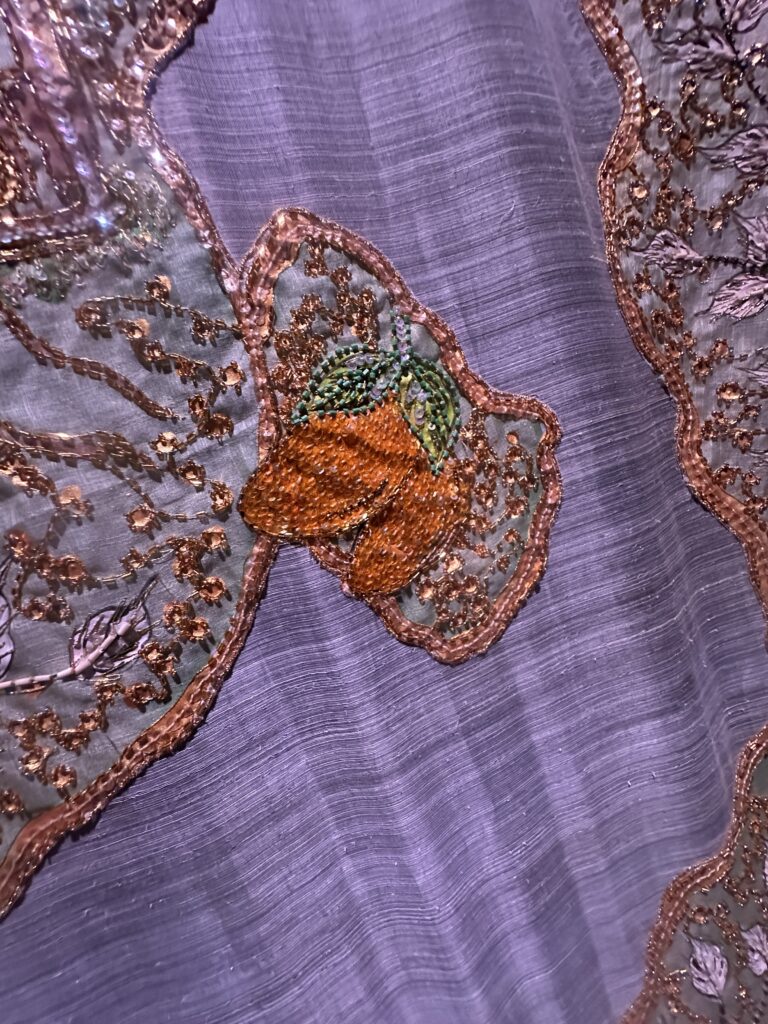
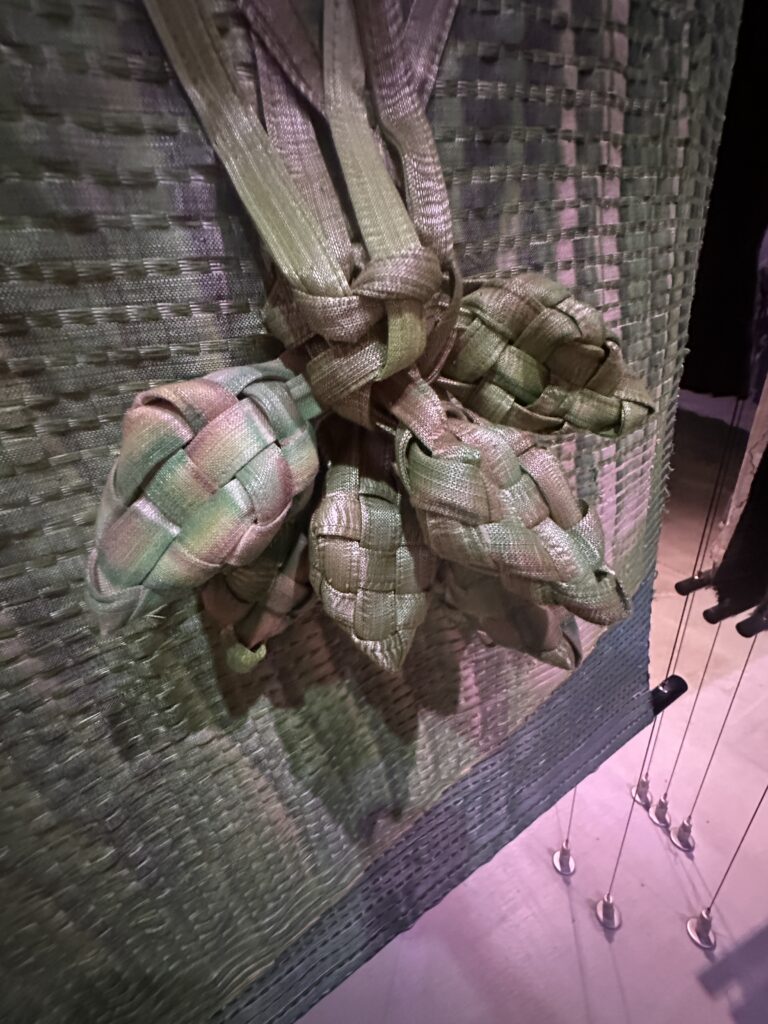
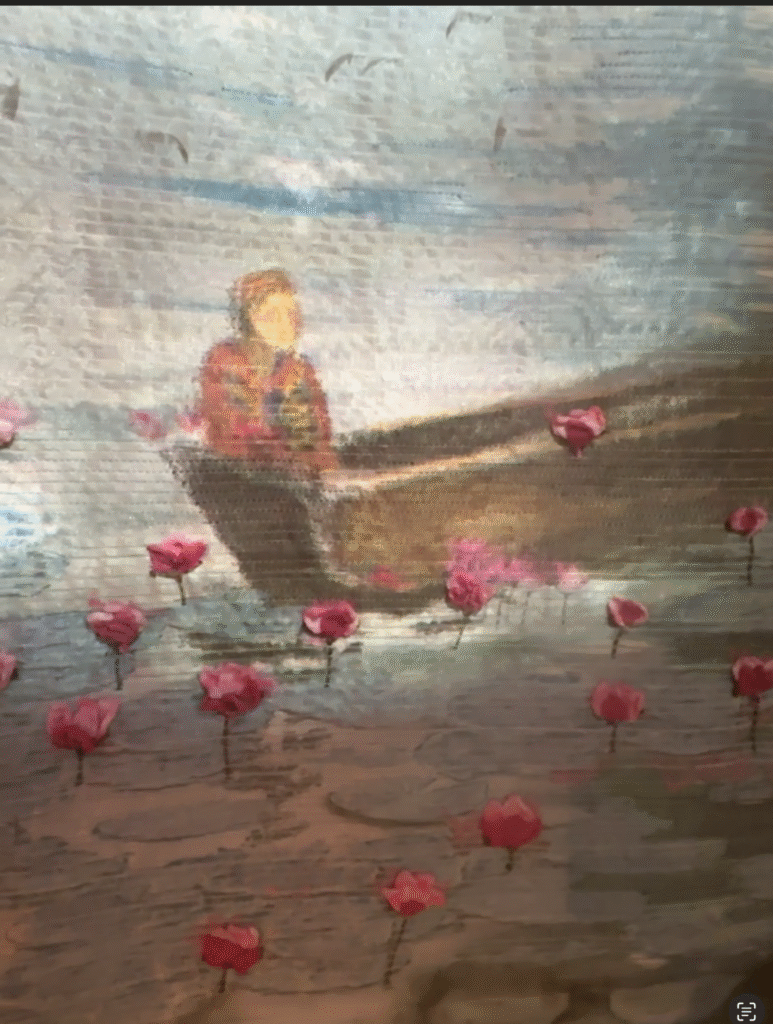
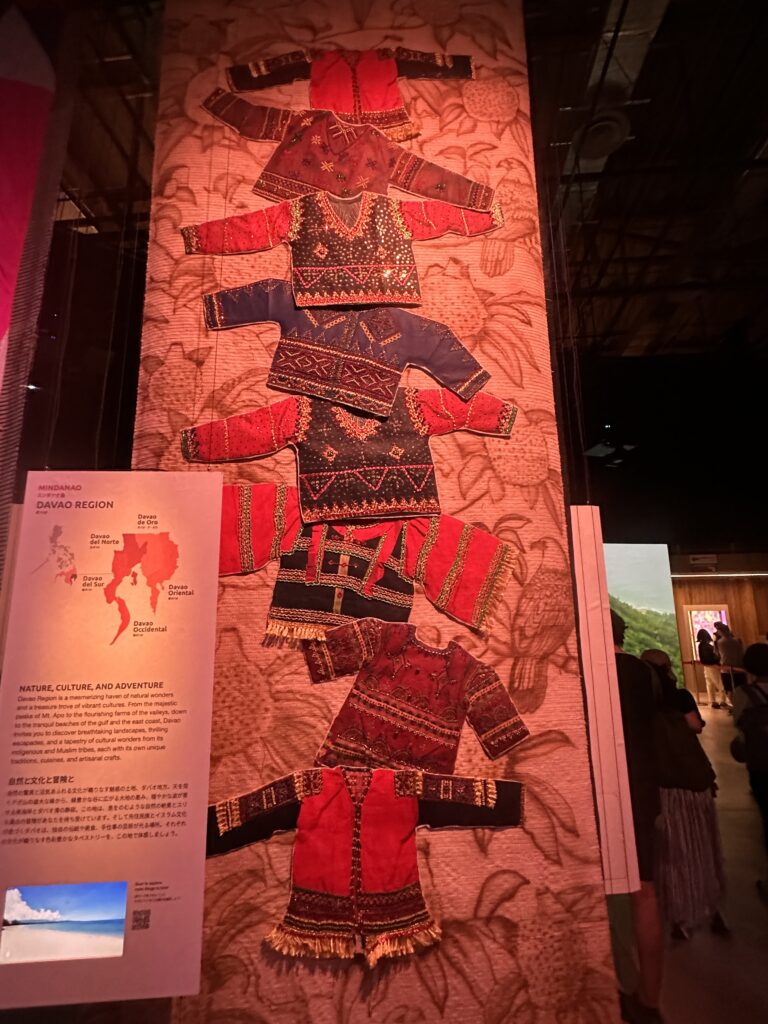
The curious type? “You can go ahead and touch them,” encourages San Jose. She did note that the tapestries will likely find a home in a museum back home when the exposition is over, so more people can see them.
One very popular highlight of the pavilion is the interactive screen, which showcases Philippine flora and fauna called Dancing With Nature, that reacts to the movements of the people passing by. “It’s very popular with both the kids and adults. It gives them a fun way to interact and get to know more about the country’s natural resources,” quips San Jose.
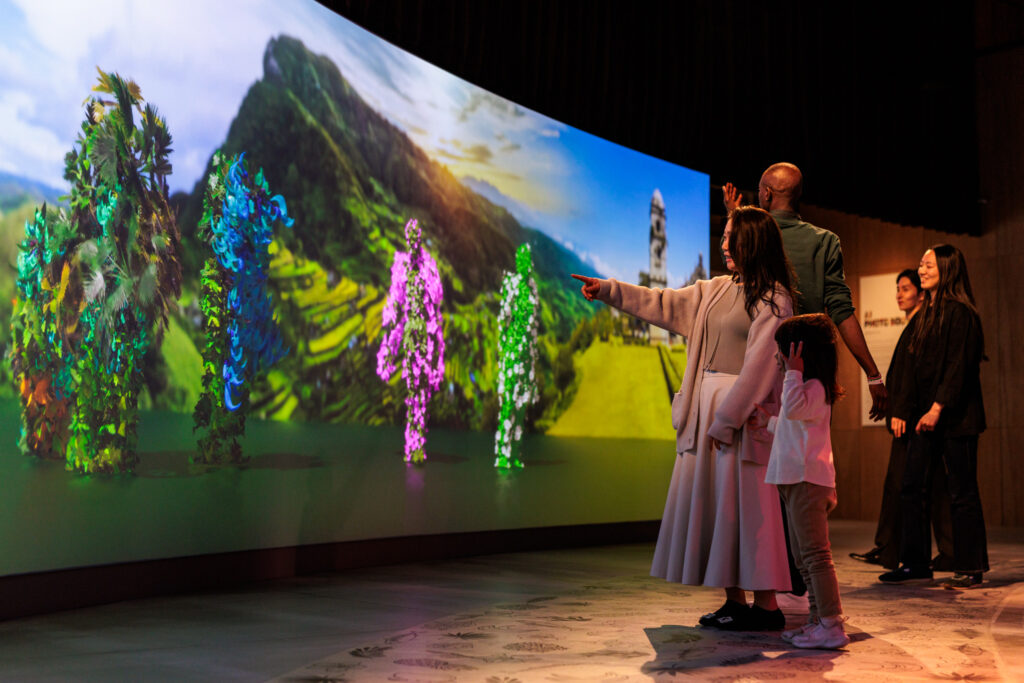
The pavilion also features cultural dances and performances by the Ramon Obusan Folkloric Group throughout the day, much to the delight of visitors.
Stay for the food
Of course, where there are Filipinos setting up shop, Filipino food cannot be far behind. At the Philippine pavilion, that spot is Hain, a take-out counter serving up dishes that innovate of classic homecooked dishes, catered by the Via Mare group. Crowd favorites were the adobong manok sa gata, lechon Bisaya, and rellenong talong. In the months since the Expo opened, “We’ve had people coming back a second time or more. There is a steady queue there everyday,” shared San Jose. For dessert, the halo-halo is a must!
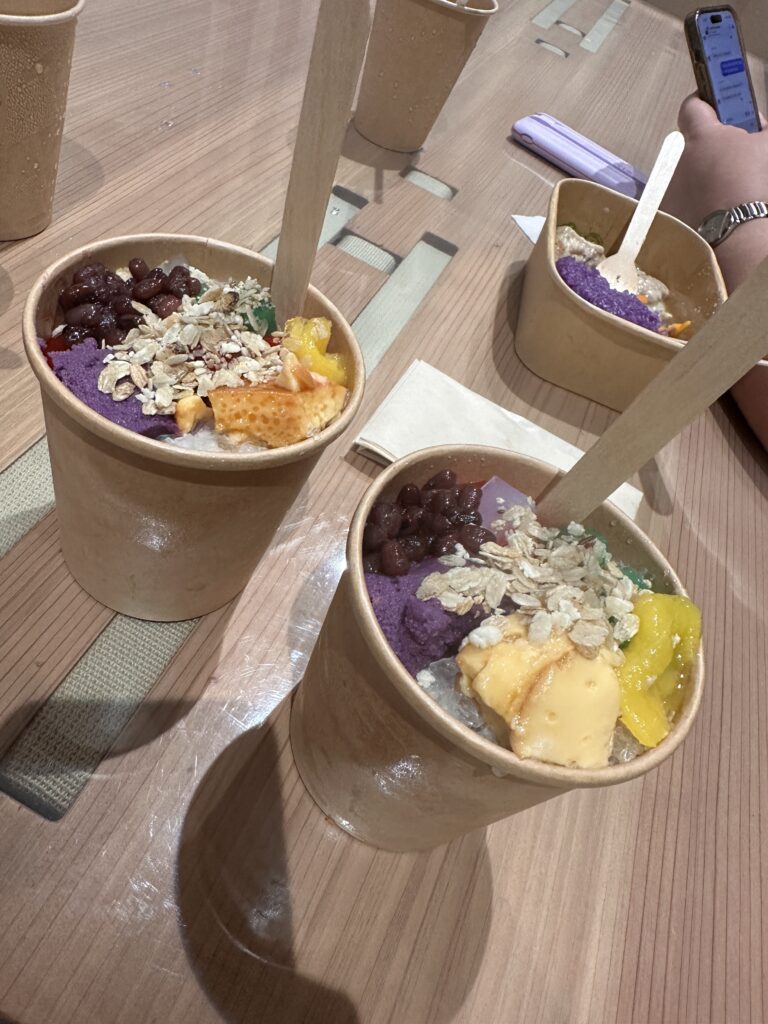

Oh one last thing: thanks to San Jose, we learned that there are actually 7,641 islands in the Philippines. That’s an extra 534 islands, which were discovered through enhanced satellite imaging and other high resolution mapping technology. Maybe not so fresh news, but still, mind blown!
Expos for a better world
The World Expo first began in 1851 with Britain’s Great Exhibition, where it was called the Great Exhibition of the Works of Industry of All Nations, held in Hyde Park. It was an ambitious undertaking made possible through the efforts of Prince Albert, Queen Victoria’s husband. He wanted to showcase the best of what Britain had to offer the world, while attracting international investments.
In 1928, the Bureau International des Expositions was formed to regulate and oversee these massive events. Under their watch, the expos have been organized around a central theme, drawing focus on innovations and aspirations that will improve human knowledge, and spur on scientific and social progress. Since then, the expo has been held every five years with different countries taking on hosting duties.
This year’s World Expo in Osaka is the second time the city (and Japan, which is a founding member of the BIE ) was selected as the venue for the six-month global event. When they were hosts in 1970, they were the expo’s first Asian home, with the theme Progress and Harmony For Mankind, and welcomed over 64 million visitors, making it the most visited World Expo of the 20th century. In June of this year, it was announced that Riyadh will be the expo site in 2030, with the theme Foresight For Tomorrow.
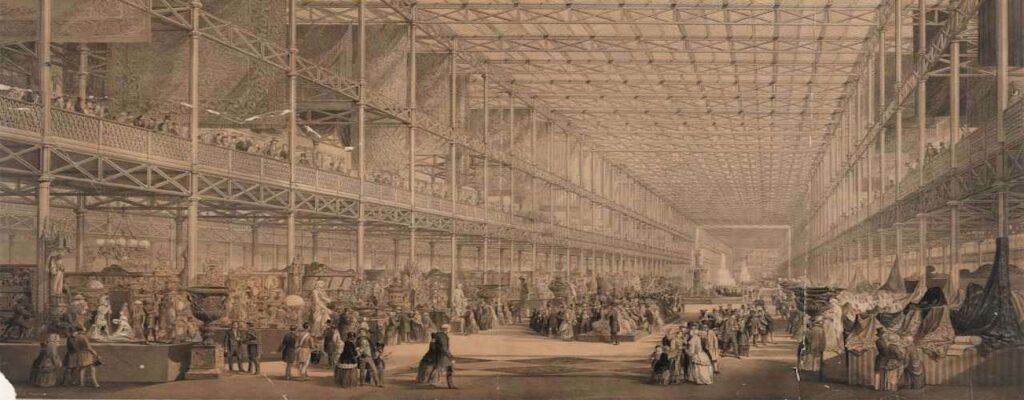
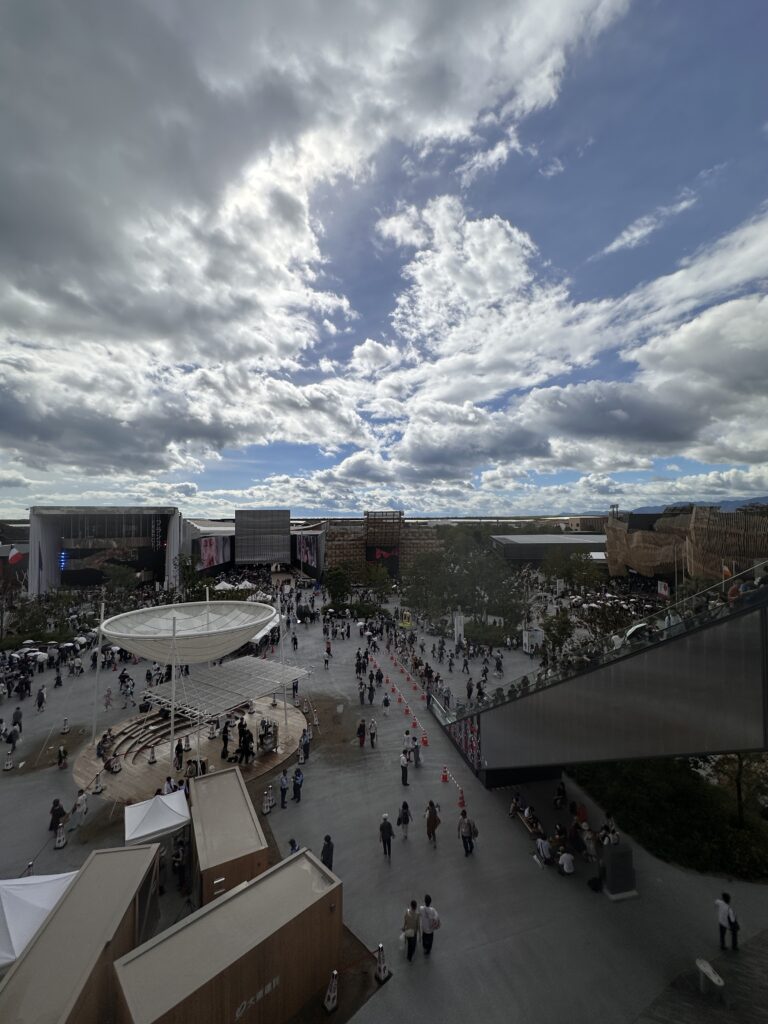
Related Story: Designed by Carlo Calma, the Philippine Pavilion stuns at Osaka Expo 2025
Related Story: Eats all about Osaka
Without glorifying Filipino resilience, which has been taking a beating with the onslaught of typhoons Nando and Opong, it remains to be one of our strongest traits as a people. This is evident in the way our culture has evolved over the centuries —surviving war, drought, and yes, even a pandemic. The central theme of the Philippine pavilion at the World Expo, Woven, represents this journey.
In a previous statement, Chief Operating Officer of the Tourism Promotions Board Marga Nograles said, “The Philippine Pavilion is a living expression of our country’s stories and spirit. Every woven panel, every performance, and every flavor is part of the continuing narrative of the Filipino people. In a world driven by innovation, we’re here to show that tradition still matters — that human connection and cultural memory can shape a more inclusive, meaningful future.”
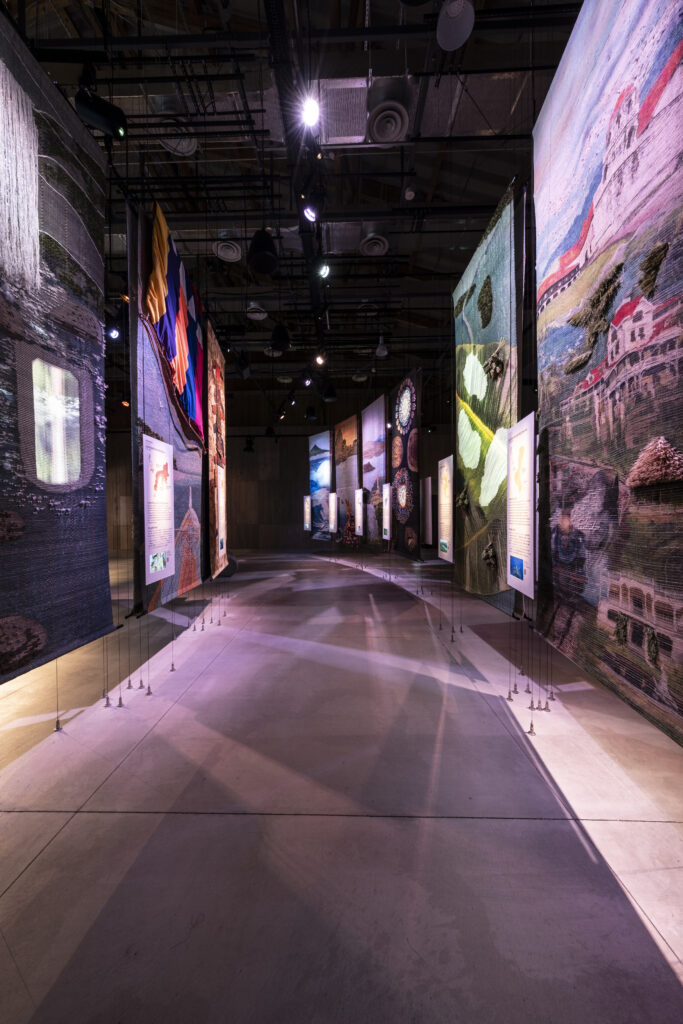
With still a few more weeks to go, the Philippine pavilion would have surpassed over a million visitors since it opened in April of this year. During this time, there is one thing that San Jose hopes visitors will take with them as they leave: “We want them to feel our warmth, to feel Filipino hospitality, that they will experience a celebration of our culture and our traditions. We want them to feel our vibrance as a people, and as a country. “
Ours is a country that is a tightly intertwined amalgamation of everything we have gone through in our young history. creating the strong cultural fabric that both keeps us together, and tells the world who we are. That alone is worth that hefty dose of Pinoy pride, and to be standing in a space that celebrates that, ngl, makes your heart skip a bit. World Expo Osaka 2025 runs until October 13, so if you find yourself on a trip to Japan, do stop at the Philippine pavilion. It is worth the visit.
Related Story: Japan rolls out more measures vs overtourism: Hiked Mt. Fuji fee, Kyoto lodging tax
Related Story: A Japanese man sets up postbox for letters of grief from people who lost loved ones in 2011’s tsunami



